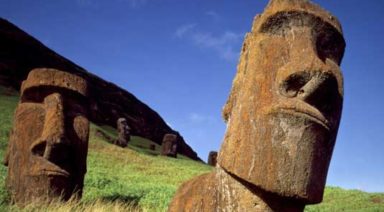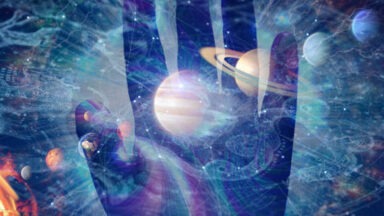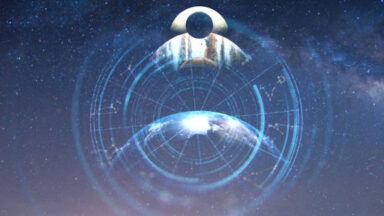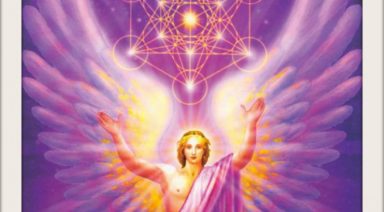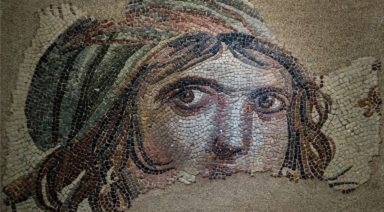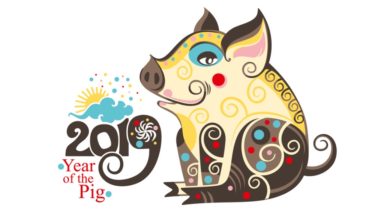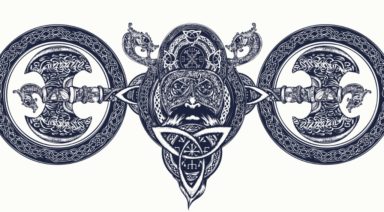Who is Sophia in Gnosticism? Goddess of the Divine Feminine

Sophia, the embodiment of divine wisdom in Gnostic tradition, graces us with a profound understanding of the feminine aspect of the cosmos. Gnosticism—interwoven with early Christianity and enriched by Hellenistic philosophy—is more than a religion; it is a journey toward self-realization and communion with a deeper reality. This sacred knowledge, known as Gnosis (from the Greek “to know”), was lovingly passed down through myths found in Gnostic texts such as those discovered in the Nag Hammadi library.
The Myth of Sophia: The Divine Feminine
Let us immerse ourselves in the enchanting myth of Sophia, whose story illuminates the depths of divine wisdom and the sacred feminine.
Sophia’s Origin in the Pleroma
In Gnostic cosmology, Sophia is the radiant feminine personification of divine wisdom and the youngest of the Aeons—emanations of the ultimate reality known as the Monad or Pleroma. Dwelling in the spiritual fullness of the Pleroma, Sophia is intimately connected with the unknowable Father’s brilliance, born of the twin powers of Depth and Silence.
The Descent and Creation of the Material World
Compelled by an intense yearning to know the Father’s essence, Sophia emanates without her consort, creating a disturbance that leads to her descent from the Pleroma. In her fall, she becomes entwined in the material world, inadvertently giving birth to the Demiurge, often called Yaldabaoth. This ignorant and arrogant entity fashions the material universe, unaware of the spiritual realms above. In certain Gnostic scriptures like the Apocryphon of John, the Demiurge is equated with the God of the Old Testament.
Sophia’s descent introduces imperfection, suffering, and ignorance into existence, as the material world is shaped through her unintended actions.
Sophia’s Presence and Redemption
Yet even in her descent, Sophia’s luminous essence continues to touch the world, offering a path toward spiritual awakening and redemption.
Infusing Divine Wisdom into Humanity
Despite her fall, Sophia remains ever-present in the world, infusing it with beauty and spiritual potential. She conceals divine consciousness within humanity, nurturing the possibility of spiritual awakening. Through her boundless compassion, Sophia aids souls in seeking Gnosis to ascend back to the spiritual realms.
The Feminine Heart of the Earth
Sophia embodies the soul of the world—sometimes known as the anima mundi or Gaia—bridging the material and spiritual realms. Her myth illustrates the essential role of the Divine Feminine in overcoming ignorance and reuniting with the spiritual source. Embracing Sophia highlights the importance of balancing masculine and feminine energies to achieve wholeness and enlightenment.
Sophia Across Cultures and Traditions
Her timeless wisdom echoes across different cultures and spiritual paths, revealing universal truths about the Divine Feminine.
Wisdom Personified in Various Beliefs
- Hebrew Tradition: In the Book of Proverbs, wisdom is personified as a woman, reflecting aspects of Sophia.
- Christian Gnosticism: Texts like the Pistis Sophia portray her seeking redemption, guided by Jesus Christ. The Valentinian Gnostics emphasize her restoration through the intervention of the Savior, often identified with the Logos or Christ.
- Eastern Traditions: In Hinduism, she parallels Shakti, the dynamic feminine energy. In Buddhism, she resonates with the compassionate bodhisattva Guanyin.
- Philosophy: Plato explored ideal forms, linked to the Gnostic understanding of the Pleroma and the emanation of Aeons.
Psychological Interpretations
- Carl Jung: Identified Sophia as an archetype of the anima, representing the feminine aspect within the male psyche and a bridge to the collective unconscious. Integrating Sophia symbolizes the process of individuation and psychological wholeness.
- James Hillman: Expanded on Jung’s ideas, viewing Sophia as embodying wisdom, compassion, and the muse in psychological development.
Modern Psychological Understanding
In the realm of modern psychology, Sophia’s story offers profound metaphors for understanding the journey of the soul and the integration of the self.
Sophia as a Reflection of the Psyche
The myth of Sophia provides deep insights into the human psyche and spiritual evolution. Carl Jung saw her story as a reflection of the collective unconscious and a guide for personal growth. The narrative illustrates the descent into the depths of the unconscious (the material world) and the subsequent ascent toward self-realization and unity with the divine.
Sophia’s journey mirrors the psychological process of confronting and embracing the shadow self, leading to enlightenment. This transformative path emphasizes balancing masculine and feminine energies within, fostering a holistic approach to spiritual growth.
Influence on Religious Thought
Sophia’s profound impact can be traced through the evolution of religious ideas and spiritual teachings throughout history.
Early Christianity and Gnostic Scriptures
Early Church Fathers, such as Irenaeus, criticized Gnostic teachings, including the myth of Sophia, viewing them as heretical to orthodox Christianity. Despite this, elements of Sophia’s wisdom can be found in Christian mysticism and the concept of the Holy Spirit, sometimes associated with the feminine aspect of the Trinity.
Suppression and Rediscovery of the Divine Feminine
The early Roman Catholic Church largely suppressed the recognition of the Divine Feminine, leading to the marginalization of Sophia’s role in mainstream Christian theology. However, the discovery of Coptic texts like the Gnostic Gospels and the Pistis Sophia has renewed interest in her significance within spiritual traditions.
The Path of Ascent: Finding the Way Back Up
Her myth serves as a beacon, illuminating the path back to unity with the divine source.
Embracing Divine Wisdom
Sophia’s myth encourages us to embrace divine wisdom and seek spiritual awakening. By recognizing the presence of Sophia within, we can overcome ignorance and ascend toward higher consciousness. The journey involves uniting the masculine and feminine aspects of the self, transcending duality, and attaining Gnosis.
Personal Transformation and Unity
In Gnostic belief, salvation is achieved through knowledge and inner enlightenment rather than external rituals or dogma. Sophia serves as a guide and catalyst for this inner transformation, offering a path to reconnect with the divine source. This unification leads to becoming a complete person, filled with the knowledge of the transcendent, unified light.
Sophia, as the Gnostic goddess of wisdom, embodies the vital role of the Divine Feminine in spiritual enlightenment. Her myth conveys profound truths about the nature of reality, the human soul, and the path to self-realization. By understanding Sophia’s story and embracing the wisdom she offers, we can embark on a transformative journey toward unity with the divine.
As Dr. Stephan Hoeller, a prominent Gnostic scholar, beautifully states:
“Those favored by the grace of Sophia may devote their lives to offering active service in the public arena, or they may simply bring the compassionate light of Sophia to bear upon the private human tasks of their daily lives.”
Further Exploration
Discovering the higher self is an essential part of ascension. The following programs can support you on this journey:
Knowing Gnosis: Occupying Resurrection

The Gnosis of “The Gnostics” (And Everyone Else…)
In a previous article, I told a version of the wonderful Gnostic myth of Sophia, the princess of Wisdom itself, and her descent to earth to elevate humanity through the example of her struggle back up to the light, and her gift of consciousness to mankind through the power of feminine energy. Hers is the classic myth of metaphor, describing the Gnosis of the Gnostics in a way that resonates in the heart and mind. Summing up the essential myth of the Gnostic inner journey goes something like this:
Humanity is an expression of a Divine Light imprisoned in a clunky, imperfect plane of existence, surrounded by the beauty of human life and the earthly realm, but victimized by the suffering that is such a big part of it all.
Each human contains a spark of the Divine Light within, and enduring Life’s painful challenges inspires the desire to reunite that inner spark with the great field of Divine Light, our Source, called the pleroma.
It sounds quite a bit like Buddhism doesn’t it? That’s because it is, in a way – there are ways, in ritual, action, and practice, that the suffering can be avoided.
The self-realization of the light within requires some help from The Divine, and that’s where Sophia and her male counterpart (and husband-to-be), The Christ enter into the process, as specific objects of divine devotion. An approach, or set of principles designed to merge the earthly ego with the eternal self; and a community of shared consciousness – individuals who are seeking the same state of happiness, wholeness, and purpose – are necessary parts of the process, too.
In a way, Buddhists call this “The Buddha, The Dharma, and The Sangha”, Catholics, “The Father, The Son, and The Holy Spirit”.
Across the spiritual board, these constituent parts are very nearly identical in every process of Gnosis, from humankind’s earliest indigenous nature religions, to contemporary Twelve Step Programs, where this triangular incubator of Gnosis is called “a higher power, the steps, and the fellowship.”
Gnostic Spiritual Mythology Was The First Depth Psychology
For the Gnostics, all of these iconic, archetypal metaphors were very elemental, indeed, proceeding from the concept of a watery submersion of the eternal self in the depths of the psyche (the path of water to find its greatest power by seeking its lowest point); to the transformational fire of human suffering – alive in that desperate need to reunite with The Divine; to the emergence of the light within, and its re-merging into “the sun of God”.
The water holds the painful obstacles, the earth is the plane of their realization and exposure, the fire burns away those onerous human handicaps, the inner spark breaks free and expands back into transcendent light – a “marriage” of opposite aspects: yin and yang, male and female, darkness and light, etc., that takes place in the effulgence of “Heaven”.
Yeshua said: ‘When you bring forth that within you, then that will save you. If you do not, then that will kill you.”
The Gospel of Thomas, Logion 70
This is what attracted people like Joseph Campbell (The Hero’s Journey) and Carl Jung (individuation) to Gnosis and Gnosticism, the fact that it pre-dated every form of modern depth psychology with its remarkable synthesis of human experience into an archetypal framework, and mystical, ritual process of rebirth, recovery, and “resurrection”. The story of an authentic spirit’s journey from a fragmented, semi-conscious “death”, to the wholeness of a compassionately conscious “re-birth” mirrors every individual’s shared journey to wholeness and happiness.
[Mythology inspires] the natural metaphysical impulse to transcend the illusion of separation.
Joseph Campbell
Rebellion and Resurrection
The Gnostics’ understanding of our psychological sub-strata was really quite simple, and sort of profoundly perpendicular, in a way, as symbolized, finally, not as the iconic early Christian fish, submerged in the depths of Life, but as The Cross that supports the ego-death that’s necessary if we want to get back to “The Kingdom”. The horizontal experience of Life on earth, in a human body, intersecting the vertical inner knowledge and understanding of our true ascendant nature and potential.
Gnosis begins with an uncomfortability about Life, a rebellious dis-ease that moves us to reunite our selves with a comfort and ease of being that we’re all entitled to. In this way, Gnosis is a subtractive process – intentionally recognizing and eliminating the attitudes and constraints that human life presents us with; and it’s an expansive process – bringing us into the consciousness of our limitless potential by merging our damaged, earthly egos with a pure, eternal Love, accessible through our hearts. But unfortunately, you may have to get a little mad first…
When you make the two into one, when you make the inner like the outer, and the high like the low; when you make the male and the female into a single One…when you have eyes in your eyes, a hand in your hand…and an icon in your icon, then you will enter into the Kingdom.
The Gospel of Thomas, Logion 22
The discovery of the goals and methods of early Christian Gnosticism – what Christianity truly was originally – came to light with the discovery of ancient hidden codices in Nag Hammadi, Egypt in 1945. There, gospels and other scriptures, unmanipulated or annodated for nearly two thousand years, led to a resurrection, so to speak, of this system of inner exploration.
Discover the true Gnosis of the Gnostics, with all its ancient metaphoric mythology, and applications to contemporary spiritual psychology in Gnostic scriptures such as: The Gospel of Thomas, The Gospel of Phillip, The Pistis Sophia, The Gospel of Truth, The Gospel of Mary, and in many fine resources, like: Stefan Hoeller’s The Gnostic Jung, and Jung and the Lost Gospels, or in Carl Jung’s Seven Sermons to the Dead, and Answer to Job.




